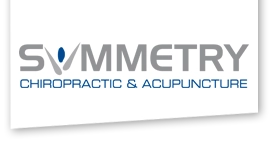SoftWave TRT & Its Benefits For Sciatica Relief in Naperville IL
SoftWave TRT & Its Benefits For Sciatica Relief in Naperville IL

Sciatica can be an incredibly disruptive condition, impacting everything from your ability to walk comfortably to getting a good night's sleep. For many sufferers, traditional treatments like medications, physical therapy, or even surgery don’t always provide lasting relief. This is where SoftWave TRT—a cutting-edge therapy—steps in as a promising alternative. Contact our Naperville IL chiropractic clinic today to learn more.
Designed to stimulate the body’s natural healing processes without invasive procedures, SoftWave TRT offers a non-surgical, drug-free path to easing sciatica pain. If you’ve been battling with chronic discomfort, numbness, or tingling from sciatica, understanding how this innovative treatment works could be your first step toward meaningful relief.
What is SoftWave TRT and How Does It Work?
SoftWave TRT, or Tissue Regeneration Therapy, is a non-invasive treatment that uses patented electrohydraulic shockwave technology to stimulate natural healing at a cellular level. It is designed to target inflamed and damaged tissues without the need for injections, surgery, or medication. For people suffering from sciatica, SoftWave TRT offers a powerful option for pain relief and functional improvement by addressing the underlying cause rather than just masking the symptoms.
This therapy works by delivering a series of acoustic waves to the affected area. These sound waves penetrate deep into soft tissue and promote increased blood flow, stimulate the migration of stem cells, and enhance cellular activity. These biological responses accelerate the body’s own regenerative processes, which is critical for repairing nerve and muscle damage associated with sciatica.
One of the key advantages of SoftWave TRT is its ability to reach areas that are difficult to treat with traditional methods. In cases of sciatica, where the sciatic nerve is compressed or irritated due to disc herniation or spinal issues, SoftWave can help reduce inflammation and encourage nerve regeneration without introducing chemicals or requiring downtime.
For those who have tried various treatments without success, SoftWave TRT offers a new hope. Its technology is rooted in advanced science and is currently being used in clinics worldwide to address chronic pain conditions, including sciatica. This approach not only reduces pain but may also enhance mobility and overall quality of life.
The Science Behind SoftWave TRT for Nerve Pain
SoftWave TRT operates on the principles of mechanotransduction—a biological process where cells convert mechanical stimulus into chemical activity. When acoustic shockwaves generated by SoftWave TRT are applied to affected areas, they stimulate microtrauma in the tissues. This microtrauma isn’t damaging; instead, it activates a healing cascade by prompting the body to increase circulation, recruit stem cells, and produce growth factors that are essential for tissue repair and nerve regeneration.
For people suffering from sciatica, this is especially important. Sciatica often stems from nerve compression due to herniated discs, spinal stenosis, or muscle inflammation. The sciatic nerve, being the largest in the body, is particularly susceptible to damage or irritation. Traditional treatments might address inflammation temporarily, but they don’t necessarily heal the nerve itself. SoftWave TRT helps by initiating regenerative responses right where the nerve is impaired.
Another key scientific aspect is SoftWave TRT’s ability to modulate the inflammatory process. Chronic inflammation is a hallmark of persistent nerve pain. By encouraging anti-inflammatory responses and enhancing the delivery of oxygen and nutrients to the affected area, the therapy promotes a healthier environment for nerve recovery.
Moreover, SoftWave TRT has been shown to desensitize nerve endings, which means patients may experience a reduction in pain even before structural healing is complete. This dual effect—pain relief and regenerative stimulation—makes it a scientifically sound option for addressing the complex symptoms of sciatica.
Key Benefits of SoftWave TRT for Sciatica Sufferers
SoftWave TRT offers several compelling benefits for individuals struggling with the often debilitating effects of sciatica. Unlike many conventional treatments that focus primarily on symptom management, SoftWave TRT targets the root causes of nerve irritation and inflammation, promoting long-term recovery and improved function.
One of the most significant advantages is its non-invasive nature. There are no needles, incisions, or medications involved, making it an attractive option for those seeking alternatives to surgery or painkillers. This aspect also translates to minimal risk and no downtime, allowing patients to resume normal activities immediately after treatment.
Another key benefit is the reduction of inflammation. SoftWave TRT improves blood flow and cellular activity, which helps flush out inflammatory agents and supports the body’s healing mechanisms. This reduction in inflammation can relieve pressure on the sciatic nerve, addressing one of the core contributors to sciatica pain.
The therapy also excels at stimulating tissue regeneration. By encouraging the recruitment of stem cells and enhancing collagen production, SoftWave TRT can support the repair of damaged muscles, ligaments, and even nerve tissue—areas often compromised in sciatica sufferers.
Additionally, patients often report immediate pain relief after sessions. While full results typically build over time, the initial decrease in discomfort can be a powerful motivator to continue the treatment course. Lastly, the safety profile of SoftWave TRT makes it suitable for a broad range of patients, including those with chronic conditions or who are unable to undergo more invasive procedures.
How SoftWave TRT Compares to Traditional Sciatica Treatments
Traditional treatments for sciatica often include a combination of physical therapy, anti-inflammatory medications, corticosteroid injections, and in more severe cases, surgery. While these methods can offer temporary relief or manage symptoms, they frequently fall short when it comes to promoting long-term healing of the underlying nerve damage. In contrast, SoftWave TRT provides a regenerative approach that works with the body’s natural processes to facilitate lasting recovery.
Unlike oral medications or injections that primarily suppress inflammation and pain, SoftWave TRT actively stimulates tissue regeneration. This means it doesn’t just mute the discomfort—it helps repair the damaged areas contributing to the sciatic pain. And while physical therapy can be effective, its success largely depends on the patient’s ability to perform exercises consistently and correctly, which may not be feasible during acute flare-ups. SoftWave TRT can be performed during both acute and chronic phases without worsening symptoms.
Surgical options, although effective in some cases, come with inherent risks such as infection, prolonged recovery time, and uncertain outcomes. Surgery is also often reserved as a last resort. SoftWave TRT, being completely non-invasive and low-risk, serves as a proactive treatment alternative before surgical interventions are considered.
In terms of accessibility and convenience, SoftWave TRT sessions are quick and typically painless, requiring no anesthesia or recovery period. This makes it a viable option for those seeking effective treatment with minimal disruption to their daily lives. It’s a modern solution that aligns with the needs of today’s patients looking for safe, effective, and sustainable sciatica relief.
What to Expect During a SoftWave TRT Session In Naperville IL
For those considering SoftWave TRT for sciatica, understanding what happens during a typical session can ease concerns and help set realistic expectations. The procedure is designed to be simple, safe, and comfortable—qualities that appeal to individuals wary of invasive treatments or complex medical interventions.
Here's what a standard SoftWave TRT session generally includes:
- Initial Assessment: The provider will review your medical history and symptoms to identify the exact source of sciatic pain and determine appropriate treatment areas.
- Positioning: You'll be positioned comfortably on a treatment table, typically lying on your stomach or side to expose the lower back and legs.
- Gel Application: A special ultrasound gel is applied to the skin to ensure optimal contact between the SoftWave device and your body.
- Treatment Delivery: The practitioner will use the SoftWave device to deliver acoustic pulses to targeted areas. You may feel a tapping or tingling sensation, but it’s usually well-tolerated and not painful.
- Feedback Loop: During the session, you’ll provide feedback on areas of sensitivity or relief, which helps the practitioner adjust intensity and focus.
- Post-Treatment: There’s no downtime. Patients can usually resume normal activities immediately, though some may feel mild soreness akin to a light workout.
Most sessions last between 10 and 20 minutes. For best results, multiple sessions over several weeks are typically recommended. The experience is generally quick, hassle-free, and designed to fit easily into a busy lifestyle.
Who is a Good Candidate for SoftWave TRT?
SoftWave TRT is a versatile therapy that can benefit a wide range of individuals suffering from sciatica, but it’s especially suited for those looking for non-invasive, drug-free solutions. Ideal candidates are typically individuals who experience chronic or recurring sciatic pain and are either unwilling or unable to undergo more invasive procedures like surgery.
You may be a good candidate for SoftWave TRT if you:
- Suffer from chronic sciatic nerve pain that hasn’t responded well to medications, physical therapy, or chiropractic care.
- Experience radiating pain, numbness, or tingling down one leg, consistent with sciatica symptoms.
- Have conditions like herniated discs, spinal stenosis, or piriformis syndrome contributing to nerve compression.
- Are seeking an alternative to surgery or steroid injections, especially if you have health conditions that make these options risky.
- Want a treatment option with minimal side effects and no recovery time.
- Are physically active and need a solution that doesn’t require downtime or prolonged interruptions to your routine.
- Prefer regenerative therapies that promote long-term healing rather than short-term symptom relief.
However, individuals with certain conditions like pacemakers, bleeding disorders, or severe cardiovascular disease should consult their physician before beginning treatment. A qualified practitioner will assess your health history and symptoms to determine if SoftWave TRT is the right approach for your specific case.
If you’re struggling with persistent sciatica and are searching for a safe, non-invasive solution, SoftWave TRT might be the breakthrough you’ve been waiting for. At Symmetry Chiropractic & Acupuncture in Naperville, Illinois, Dr. Timothy Erickson provides expert care tailored to your specific needs. Discover how this innovative therapy can help restore your mobility and comfort—book your consultation today and take the first step toward long-term relief.



